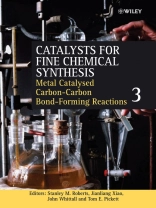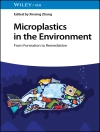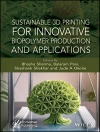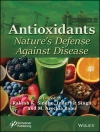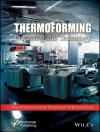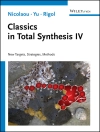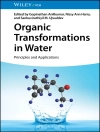The chemist has a vast range of high-tech catalysts to use when working in fine chemical synthesis but the catalysts are generally hard to use and require both time, skill and experience to handle properly. The
Catalysts for Fine Chemical Synthesis series contains tested and validated procedures which provide a unique range resources for chemists who work in organic chemistry.
‘… of great value to synthetic organic chemists…’ (The Chemists, Summer 2003)
Volume 3 in the series focuses on catalysts for carbon-carbon bond formation and presents practical and detailed protocols on how to use sophisticated catalysts by the ‘inventors’ and ‘developers’ who created them. The combination of protocols and review commentaries helps the reader to easily and quickly understand and use the new high-tech catalysts.
Table of Content
Series Preface.
Preface to Volume 3.
Abbreviations.
List of Chemical Names Used.
1 Considerations of Industrial Fine Chemical Synthesis (Mark W. Hooper).
1.1 Introduction
1.2 Types of processes – flow charts.
1.3 Costs associated with use of catalysts.
2 Alkylation and Allylation Adjacent to a Carbonyl Group.
2.1 The Ru H2(CO)(PPh3)3-catalysed alkylation, alkenylation and arylation of aromatic ketones via carbon-hydrogen bond cleavage (Fumitoshi Kakiuchi, Satoshi Ueno and Naoto Chatani).
2.2 Catalytic, asymmetric synthesis of a, a-disubstituted amino acids using a chiral copper-salen complex as a phase transfer catalyst (Michael North and Jose A. Fuentes).
2.3 Asymmetric phase-transfer catalysed alkylation of glycine imines using cinchona alkaloid derived quaternary ammonium salts (Barry Lygo and Benjamin I. Andrews).
3 Asymmetric Alkylation or Amination of Allylic Esters.
3.1 Synthesis and application in palladium-catalysed asymmetric allylic substitution of enantiopure cyclic Β-iminophosphine ligands (Maria Zablocka, Marek Koprowski, Jean-Pierre Majoral, Mathieu Achard and Gérard Buono).
3.2 (9H, 9’H, 10H, 10’H, 11H, 11H’, 13H, 13’H, 14H, 14’H, 15H, 15’Hperfluorotricosane-12, 12’-diyl)bis[(4S)-4-phenyl-2-oxazoline as a ligand for asymmetric palladium-catalysed alkylation of allylic acetates in fluorous media (Jérôme Bayardon and Denis Sinou).
3.3 Facile synthesis of new axially chiral diphosphine complexes for asymmetric catalysis (Matthias Lotz, Gernot Kramer, Katja Tappe and Paul Knochel).
3.4 Chiral ferrocenyl-imino phosphines as ligands for palladium-catalysed enantioselective allylic alkylations (Pierluigi Barbaro, Claudio Bianchini, Giuliano Giambastiani and Antonio Togni).
4 Suzuki Coupling Reactions.
4.1 Palladium-catalysed borylation and Suzuki coupling (BSC) to obtain Β-benzo[b]thienyldehydroamino acid derivatives (Ana S. Abreu, Paula M. T. Ferreira and Maria-João R. P. Queiroz).
4.2 Palladium-catalysed cross-coupling reactions of 4-tosylcoumarins and arylboronic acids: synthesis of 4-arylcoumarin compounds (Jie Wu, Lisha Wang, Reza Fathi and Zhen Yang).
4.3 Cyclopropyl arenes, alkynes and alkenes from the in situ generation of B-cyclopropyl-9-BBN and the Suzuki-Miyaura coupling of aryl, alkynyl and alkenyl bromides (Ramon E. Huertas and John A. Soderquist).
4.4 One-pot synthesis of unsymmetrical 1, 3-dienes through palladium-catalysed sequential borylation of a vinyl electrophile by a diboron and cross-coupling with a distinct vinyl electrophile (Tatsuo Ishiyama and Norio Miyaura).
4.5 Pd(OAc)2/2-Aryl oxazoline catalysed Suzuki coupling reactions of aryl bromides and boronic acids (Bin Tao and David W. Boykin).
4.6 Palladium-catalysed reactions of haloaryl phosphine oxides: modular routes to functionalised ligands (Colin Baillie, Lijin Xu and Jianliang Xiao).
4.7 Bulky electron rich phosphino-amines as ligands for the Suzuki coupling reaction of aryl chlorides (Matthew L. Clarke and J. Derek Woollins).
4.8 Arylation of ketones, aryl amination and Suzuki-Miyaura cross coupling using a well-defined palladium catalyst bearing an N-heterocyclic carbene ligand (Nicholas Marion, Oscar Navarro, Roy A. Kelly III and Steven P. Nolan).
5 Heck Coupling Reactions.
5.1 Palladium-catalysed multiple and asymmetric arylations of vinyl ethers carrying co-ordinating nitrogen auxiliaries: synthesis of arylated ketones and aldehydes (Peter Nilsson and Mats Larhed).
5.2 Palladium-catalysed highly regioselective arylation of electron-rich olefins (Lijin Xu, Jun Mo and Jianliang Xiao).
5.3 1-[4-(S)-tert-Butyl-2-oxazolin-2-yl]-2-(S)-(diphenylphosphino) ferrocene as a ligand for the palladium-catalysed intermolecular asymmetric Heck reaction of 2, 3-dihydrofuran (Tim G. Kilroy, Yvonne M. Malone and Patrick J. Guiry).
6 Sonogashira Coupling Reactions.
6.1 Nonpolar biphasic catalysis: Suzuki- and Sonogashira coupling reactions (Anupama Datta and Herbert Plenio)
6.2 Polystyrene-supported soluble palladacycle catalyst as recyclable catalyst for Heck, Suzuki and Sonogashira reactions (Chih-An Lin and Fen-Tair Luo).
7 Cross-Coupling Reactions .
7.1 Cross-coupling reaction of alkyl halides with Grignard reagents in the presence of 1, 3-butadiene catalysed by nickel, palladium, or copper (Jun Terao and Nobuaki Kambe).
7.2 Triorganoindium compounds as efficient reagents for palladium-catalysed cross-coupling reactions with aryl and vinyl electrophiles (Luis A. Sarandeses and José Pérez Sestelo).
7.3 Cross-coupling reactions catalysed by heterogeneous nickel-on-charcoal (Bryan A. Frieman and Bruce H. Lipshutz).
7.4 Carbon-carbon bond formation using arylboron reagents with rhodium(I) catalysts in aqueous media (John Mancuso, Masahiro Yoshida and Mark Lautens).
8 Regioselective or Asymmetric 1, 2-Addition to Aldehydes.
8.1 Development of a highly regioselective metal-mediated allylation reaction in aqueous media (Kui-Thong Tan, Shu-Sin Chng, Hin-Soon Cheng and Teck-Peng Loh).
8.2 Boronic acids as aryl source for the catalysed enantioselective aryl transfer to aldehydes (Jens Rudolph and Carsten Bolm).
8.3 Jacobsen’s Salen as a chiral ligand for the chromium-catalysed addition of 3-chloro-propenyl pivalate to aldehydes: a catalytic asymmetric entry to syn-alk-1-ene-3, 4-diols (Marco Lombardo, Sebastiano Licciulli, Stefano Morganti and Claudio Trombini).
9 Olefin Metathesis Reactions.
9.1 Highly active ruthenium (pre)catalysts for metathesis reactions (Syuzanna Harutyunyan, Anna Michrowska and Karol Grela).
9.2 A highly active and readily recyclable olefin metathesis catalyst (Stephen J. Connon, Aideen M. Dunne and Siegfried Blechert).
9.3 Stereoselective synthesis of L-733, 060 (G. Bhaskar and B. Venkateswara Rao)
10 Cyclisation Reactions.
10.1 Molecular sieves as promoters for the catalytic Pauson-Khand reaction (Jaime Blanco-Urgoiti, Gema Dom&ıacute;nguez and Javier Pérez-Castells).
10.2 Palladium(II)-catalysed cyclization of alkynes with aldehydes, ketones or nitriles initiated by acetoxypalladation of alkynes (Ligang Zhao and Xiyan Lu).
10.3 Rhodium(I)-catalysed intramolecular alder-ene reaction and syntheses of functionalised a-methylene-g-butyrolactones and cyclopentanones (Minsheng He, Aiwen Lei and Xumu Zhang).
10.4 Rhodium-catalysed [2 þ 2 þ 2] cyclotrimerisation in an aqueous–organic biphasic system (Hiroshi Shinokubo and Koichiro Oshima).
10.5 Titanocene-catalysed transannular cyclisation of epoxygermacrolides: enantiospecific synthesis of eudesmanolides (Antonio Rosales, Juan M. Cuerva and J. Enrique Oltra).
11 Asymmetric Aldol and Michael Reactions.
11.1 Direct catalytic asymmetric aldol reaction of a a-hydroxyketone promoted by an Et2Zn/linked-BINOL complex (Masakatsu Shibasaki, Shigeki Matsunaga and Naoya Kumagai).
11.2 Highly enantioselective direct aldol reaction catalysed by a novel small organic molecule (Zhuo Tang, Liu-Zhu Gong, Ai-Qiao Mi and Yao-Zhong Jiang).
11.3 Direct catalytic asymmetric Michael reaction of a-hydroxyketone promoted by Et2Zn/linked-BINOL complex (Masakatsu Shibasaki, Shigeki Matsunaga and Naoya Kumagai).
11.4 Catalytic enantioselective Michael reaction catalysed by well-defined chiral ruthenium-amido complexes (Masahito Watanabe, Kunihiko Murata, and Takao Ikariya).
12 Stereoselective Hydroformylation, Carbonylation and Carboxylation Reactions.
12.1 Ortho-diphenylphosphanylbenzoyl-(o-DPPB) directed diastereoselective hydroformylation of allylic alcohols (Bernhard Breit).
12.2 The synthesis and application of ESPHOS: A new diphosphorus ligand for the hydroformylation of vinyl acetate (Martin Wills and Simon W. Breeden).
12.3 Platinum-catalysed asymmetric hydroformylation of styrene (Submitted by Stefánia Cserépi-Szücs and József Bakos).
12.4 Phosphine-free dimeric palladium (II) complex for the carbonylation of aryl iodides (C. Ramesh, Y. Kubota and Y. Sugi).
12.5 Carboxylation of pyrrole to pyrrole-2-carboxylate by cells of Bacillus megaterium in supercritical carbon dioxide (Tomoko Matsuda, Tadao Harada, Toru Nagasawa and Kaoru Nakamura).
Index.
About the author
Professor S.M. Roberts and Dr Jianliang Xiao, Department of Chemistry, The University of Liverpool, The Robert Robinson Laboratories, Liverpool, UK.
Dr Tom Pickett and Dr John Whittall, Stylacats Ltd, Liverpool University.
